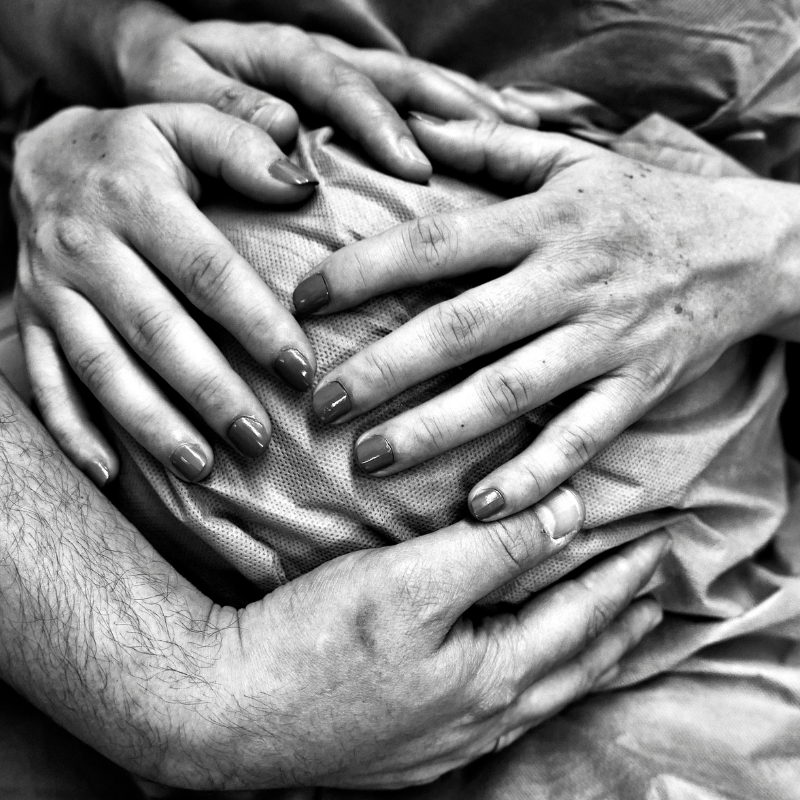As you get closer to your due date, you’re probably feeling so ready to give birth.
It’s not unusual for women to start wondering if they can prepare for labour as they get to these last weeks.
There are so many natural ways to prepare for labour, it’s hard to know which is the best to choose – or should you try them all?
Rest assured, your body was made to give birth and likely has been gently preparing without you realising.
For some women, not doing anything can really mess with their ability to be patient and wait for labour to unfold in its own time.
They start looking for ways to ‘get things going’ which can have the opposite effect they want.
Let’s take a look at some natural ways to prepare for labour, allowing the process to unfold as it should.
How do you know your body is getting ready for labor?
Your body is sent signals from your baby that they’re getting close to being ready for birth. As their lungs reach the final stage of development, able to breathe after birth, certain chemicals interact with your body to begin the process of labour. Long before actual contractions start, your body is getting ready.
Your cervix must ripen and shift position. This might be felt in slight aching or cramping, but it’s just as likely you won’t notice these sensations because you’re already dealing with back ache and Braxton hicks.
As your cervix ripens, the mucus plug might start to come away. You might notice an increase in vaginal discharge, which looks like jelly and might be tinged with pink if your cervix has started to dilate slightly.
You also might be feeling different emotionally. Impatient, restless, teary, obsessed with cleaning the house. Mood swings are a really big indicator you’re making the shift from pregnant to transitioning to motherhood.
What can I do to prepare for labour?
First, let’s be clear – we encourage women who are having a healthy, normal pregnancy to embrace these last weeks and be patient with their baby and body.
There is no need to hurry things along. Your baby is putting on the finishing touches and will chose his or her birth day when all is ready. Labour will begin when it is time for you to meet your baby.
To allow your busy mind to step back and make way for your birthing brain, you might like to try one or any of these tips to prepare for labour:
#1: Practise relaxation techniques
Probably one of the most valuable techniques you can learn through pregnancy is how to release and let go. Relaxation encompasses not just the physical, but also the mental and emotional tensions we place on ourselves.
Often the unconscious mind has absorbed all the stories about birth, positive and negative. This on top of facing a pandemic that is shifting how birth might look at your chosen birthplace, can increase your feelings of anxiety.
It’s important to actively support your mental health at this time. Switch off or limit social media and the news, get plenty of sleep so you’re refreshed each day.
Learning to breathe slowly and deeply helps your body and mind to seer into calm waters, preventing tension in your muscles, reducing stress hormones that might interfere with the hormonal shift needed for labour to begin.
#2: Massage to prepare for labour
Massage therapy has incredible benefits for women during pregnancy, especially in the last trimester. It encourages the production of oxytocin, the love hormone we release when feeling good. Oxytocin promotes contractions of the uterus, so it’s a key ingredient in getting baby from inside to outside!
Massage therapy in late pregnancy has another really important effect. Sometimes babies are tucked up in positions which aren’t ideal for birth. This might change during labour but it can be something that causes worry or anxiety beforehand, increasing stress hormones which work against oxytocin.
Preparing your body for labour with massage therapy can stimulate acupressure points that assist with cervical dilation and contractions by boosting oxytocin levels too.
Nurtured Birth offers massage therapy that addresses functional issues preventing your baby from getting into the optimal position for birth. Releasing muscle tension will create the space your baby needs to move into the pelvis, or to rotate from breech, posterior or even tuck their chin in! We also offer Shiatsu massage for labour preparation, which utilises specific acupressure points.
Get in touch with us to book a massage session to start preparing for labour by contacting us here.
#3: Nourish your body
Labour is like running a marathon – it uses up a lot of energy and you need some key nutrients to keep your reserves well stocked.
Your uterus is your strongest muscle, with vertical and horizontal muscle fibres intertwining to create a mighty force to birth your baby. Muscles need fuel to keep working, so ensuring your diet is nutrient dense and balanced is of great importance.
In particular, protein is essential as it’s a building block of oxytocin, so things like bone broth and meat cooked on the bone are excellent sources.
If you’re a vegetarian, find ways to increase your protein intake during your last weeks of pregnancy. You might like to seek the support from our naturopath at Nurtured Birth for more advice on how to best meet your protein and mineral needs.
#4: Exercise to prepare for labour
It’s hard when you’re this pregnant to even think about moving. What if we told you exercise is one of the key factors in ensuring a normal birth, with a shorter labour? Research has shown exercise to be one of the best and easiest ways to prepare your body for labour.
It can be as simple as a walk for half an hour each day. Get your heart rate up a bit, move those muscles and breathe in fresh air – you also up your vitamin D levels and improve your gut health at the same time!
#5: Raspberry leaf tea
Red raspberry leaf tea is a traditional brew offered to women in their last month of pregnancy. You may have the idea it’s to induce labour but instead it acts as a tonic, preparing the uterus for labour.
Red raspberry leaves are chock full of nutrients, such as B vitamins, iron, calcium, iron , potassium and magnesium. It’s often referred to as the woman’s herb as it contains a compound called fragarine, which tones and tightens muscles in the pelvic area, including the uterus.
Some studies have shown women who drink red raspberry leaf tea will have shorter labours and fewer interventions.
Click here to book a session with Nurtured Birth’s naturopath to find out how herbal medicine can assist in toning and strengthening your uterine muscles before you give birth.
#6: Eating dates
You may have heard of an old wives’ tale that eating dates can help women to have an easy birth.
This tradition comes from the Middle East and is mentioned in the Quran as well. Research into this tradition has shown it to be an effective way to prepare for labour.
Studies show women who ate 6 or more dates every day for 4 weeks before birth were more likely to go into labour naturally, have a shorter labour, and dilate more efficiently than those who hadn’t eaten dates.
Don’t like dates? Blitz some up in a food processor, add in almond meal, coconut and cocoa, abd roll the mixture into balls. These are healthy snacks and there’s any number of recipes to search.
#7: Boost your oxytocin
In the last stages of pregnancy, your body prepares for labour in a number of ways. Progesterone levels start to decrease, which means your body becomes more sensitive to oxytocin, the hormone responsible for uterine contractions.
Oxytocin receptors in the uterus begin to increase in number and your levels of the hormone begin to build up. This is a wonderful time to boost your oxytocin levels, to ensure the process has every opportunity to progress. Ways to do this include:
- Laugh – it really is a wonderful tonic to lift your mood and get that love hormone flowing
- Embrace – hugs and touch with someone you love, snuggle your pet
- Sex – intimacy is certainly a surefire way of boosting the love hormones, especially with nipple stimulation and orgasm
- Tune in – listening to our favourite music can increase positivity and feel good feelings that lead to more oxytocin
- Share – your thoughts and feelings, your time, your ear or share food. Being kind and positive towards others makes us feel good inside, which sparks off plenty of that love hormone.
The bottom line – you don’t have to do anything to get labour to start but you can be an active participant in smoothing the pathway to a positive and empowering birth.
















